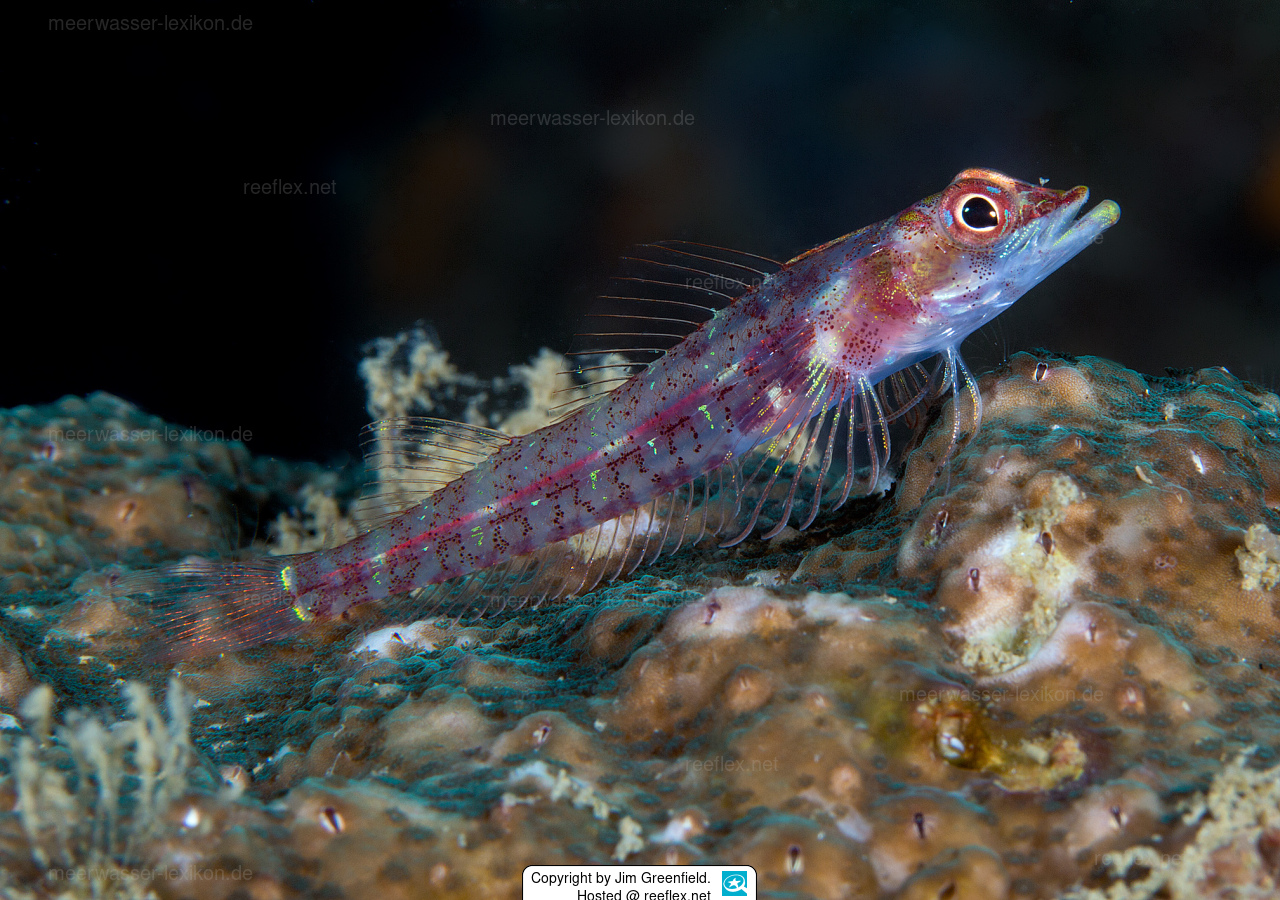Info
Holleman, 1993
Distribution
Pacific Ocean: Viet Nam, Philippines, Palau and Caroline Islands to Papua New Guinea, Australia (including Christmas Island), and Solomon Islands, Fiji, Tonga, east to American Samoa and Rapa.
Biology
Found in caves, crevices and on flat surfaces of coral, sponges or rubble with algae.
Environment
Marine; reef-associated; depth range 2 - 41 m usually 2 - 32 m
Synonymised taxa
Ucla xenogramma Holleman, 1993
Classification: Biota > Animalia (Kingdom) > Chordata (Phylum) > Vertebrata (Subphylum) > Gnathostomata (Superclass) > Pisces (Superclass) > Actinopterygii (Class) > Perciformes (Order) > Blennioidei (Suborder) > Tripterygiidae (Family) > Tripterygiinae (Subfamily) > Ucla (Genus) > Ucla xenogrammus (Species)
Jumping guard
A jumping guard prevents (nocturnal) fish from jumping out.
Wrasses, blennies, hawkfishs and gobies jump out of an unprotected tank in fright if their night rest is disturbed, unfortunately these jumpers are found dried up in the morning on carpets, glass edges or later behind the tank.
https://www.korallenriff.de/en/article/1925_5_Jump_Protection_Solutions_for_Fish_in_the_Aquarium__5_Net_Covers.html
A small night light also helps, as it provides the fish with a means of orientation in the dark!
Distribution
Pacific Ocean: Viet Nam, Philippines, Palau and Caroline Islands to Papua New Guinea, Australia (including Christmas Island), and Solomon Islands, Fiji, Tonga, east to American Samoa and Rapa.
Biology
Found in caves, crevices and on flat surfaces of coral, sponges or rubble with algae.
Environment
Marine; reef-associated; depth range 2 - 41 m usually 2 - 32 m
Synonymised taxa
Ucla xenogramma Holleman, 1993
Classification: Biota > Animalia (Kingdom) > Chordata (Phylum) > Vertebrata (Subphylum) > Gnathostomata (Superclass) > Pisces (Superclass) > Actinopterygii (Class) > Perciformes (Order) > Blennioidei (Suborder) > Tripterygiidae (Family) > Tripterygiinae (Subfamily) > Ucla (Genus) > Ucla xenogrammus (Species)
Jumping guard
A jumping guard prevents (nocturnal) fish from jumping out.
Wrasses, blennies, hawkfishs and gobies jump out of an unprotected tank in fright if their night rest is disturbed, unfortunately these jumpers are found dried up in the morning on carpets, glass edges or later behind the tank.
https://www.korallenriff.de/en/article/1925_5_Jump_Protection_Solutions_for_Fish_in_the_Aquarium__5_Net_Covers.html
A small night light also helps, as it provides the fish with a means of orientation in the dark!







 Jim Greenfield, Großbritannien
Jim Greenfield, Großbritannien







